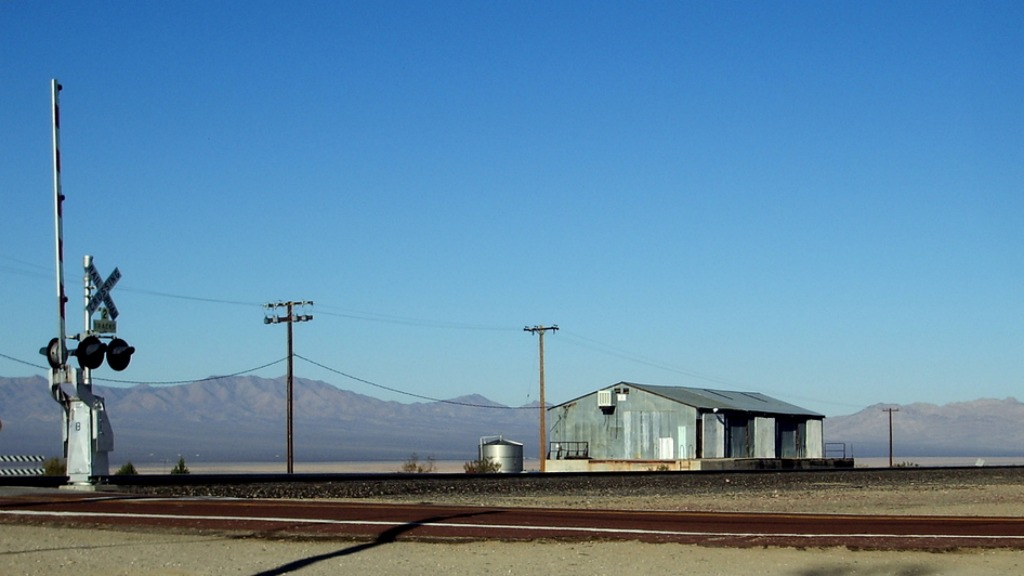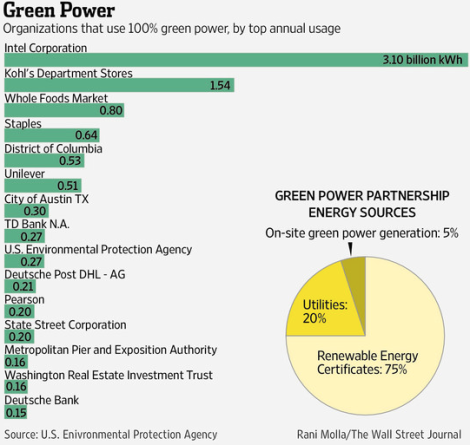It may not be as sexy as TIME’s 100 most influential people (‘Yonce!), but the EPA’s Top 100 list sheds light on some green energy superstars you might not know about. The list is culled from voluntary participants in the EPA’s Green Power Partnership. Whole Foods is no surprise, but Intel and Kohl’s actually buy even more clean power:
It should be noted, though, that renewable energy certificates count in the EPA’s ranking, so solar isn’t necessarily powering the lights during your next Kohl’s polo shirt shopping spree. A full 75 percent of the generation comes from RECs, which “show the organization paid to offset its traditional energy use with clean-energy investments,” writes the WSJ.
Auden Schendler recently had some harsh words for the Green Power Partnership and RECs:
Because the project (let’s say it’s a wind farm) is already built and the developers don’t need more money, and because there are a lot of operating wind farms, the price of the REC is almost nothing — between $1 and $2 per megawatt hour. And because something that costs almost nothing has little value, it is no surprise that it doesn’t do anything to change the CO2 emissions. Indeed, REC brokers and trade groups simply can’t show that a $1 or $2 REC sale has any meaningful impact on wind farm development.
Ouch. Another thing the chart doesn’t show is that companies like Google and Microsoft are near the top of the list for green power use — 737 million kWh and 1.36 billion kWh, respectively — but that only measures up as a third and half, respectively, of their total electricity needs. There’s clearly opportunity for businesses to do more. Hopefully they’re investing in energy efficiency to get their overall energy use down, too.




